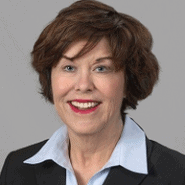
Cynthia Davis, Hospital-at-Home Consultant (Former CHIO, Methodist Le Bonheur Healthcare)
Throughout my career, my focus has been on identifying opportunities to improve the quality and outcomes of patient care delivery with a strong foundation of effective cost management, process, and systems of care. As a nurse who started her career at the bedside and as an IT/informatics executive, I am grateful for the opportunity to continue to streamline and support care across the entire care delivery ecosystem. We are at the 10-mile marker of a journey of 10,000 steps in that takes time and provider/clinician and consumer transformation.
I want to bring my comments back from the 10,000-foot level to our daily work and provide a call for action as we make this journey. It has been a personal journey over the past year, with my very independent (translation: stubborn) mother choosing to stay at her home — one that’s far away from family and grandchildren. Delivery of care in her home is her choice.
That’s where care coordination comes in. Longitudinal care planning, care team and care schedule visibility makes her dream a reality.
I got a call on a beautiful Saturday afternoon from my sister telling me that my 90-year-old mother had demonstrated signs of a stroke and had been transported to her hospital in Michigan. When I called the hospital, I found out that she was in route; the ER asked me to wait an hour after her arrival before calling to find out what was going on. Screening was initiated, and after 90 minutes of waiting, I had a chance to speak with an exceedingly kind physician. He reviewed his assessment and plan; knowing her history, I asked that they not do additional CT scans of a chronic condition. He noted this item again in her electronic record and documented again her advanced directive.
After some time, she was transferred to the floor and the nurse called asking for her medical history. I was somewhat taken aback, as my mother has been a patient many times in this location, both in the practice setting and at the hospital, which uses the fancy EMR with the yellow and green logo.
The nurse caring for my Mother was a bit frantic; she was dealing with several new admissions, and she has just had the assisted living home fax her the long list of medications. It turned out that during the early steps in her admission process, the wrong record was selected — or perhaps they were rushed and were not able to find her record and created a new one. The bottom line is that they didn’t have her long medical history or the list of her medications.
I tell this story not to throw stones, but instead to encourage all of us not to focus on a perfect technology, but instead on ensuring we have robust patient access and safe handoffs to support the care process across the continuum of care, and that all care should follow and work for patients. Not every family has a care navigator or a translator of the complex health care system.
Mother is back home and the doing well — stroke averted and new medicines started. The health system has a hospital-at-home program in which she is being remotely monitored and supported, with full access to nursing, paramedics, and social workers.
This planned process for continued care has been essential to her remaining in her location of choice. It has also been key in breaking down silos of care between the hospital, office visits, home care, and community services and improving the management of her chronic care condition. This process of care allows for tracking and home monitoring with interventions as needed. So far, this process has captured two episodes of deterioration at home, and has prevented an unnecessary readmission. The key takeaways are as follows:
- An emphasis on people and process, powered by technology
- Real-time insights to improve communication, collaboration, and coordination
- Design focused on the patient flow, not the business silos
I am grateful for the kind care she has received. My plea is to make all care transitions safe and to provide care in the right locations. We all hold in our hands the safe and effective care of each patient; let’s make it easy for our clinicians to do the right things.
This piece was written by Cynthia Davis, who is currently involved in rolling out hospital at home as a freelancer, doing work “that is making a real difference.” An experienced senior leader, Davis has held numerous roles, most recently serving as interim regional CIO at Trinity Loyola Medicine and Chief Health Information Officer at Methodist Le Bonheur Healthcare.


Share Your Thoughts
You must be logged in to post a comment.